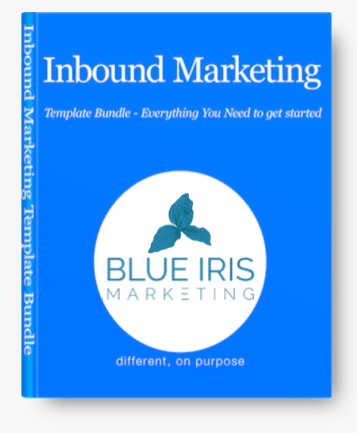How to Map Keywords to Buyers Search

The Do’s and Don’ts of Link Building
April 14, 2017
What You Need to Know About Website Design
May 6, 2017Keywords are the lifeblood of SEO. Everything you do for on-page optimization hinges on keywords, from your headlines to your image alt-text. You need keywords. You want keywords.
And it doesn’t have to be complicated.
Most businesses still think of keyword research as something like a hurdle they can’t avoid and just have to jump over. Even marketers find it difficult. More than a third of the respondents said so in the November 2016 SEO Strategy Survey by Ascend2.
Keyword research CAN and DOES take some expert finessing, because everyone and their mom are jockeying for position in organic search. In this article, I simplify what you can do to make sure your blog posts are optimized to be found by your target audience.
SEO essential: The right keywords defined
First, understand this basic SEO holy grail golden cup of victory: The right keywords are the keywords–or search queries– you want to show up for.
Once you think of it that way, you realize there are a lot of keywords for you and your business, and you stop feeling trapped and panicky, trying to find and use that perfect keyword in various forms.
Keywords and personas
As I’ve mentioned before, today’s SEO revolves around your audience, what’s they are looking for and what is helpful for them. Everything from content marketing to your emails should have your audience’s needs in mind. So it’s no surprise that keyword strategy starts with your audience. Your buyer’s persona.
If you haven’t a list yet, build one. Make something irresistible and valuable to earn the entrance into your target audience’s inboxes.
Once there, you can email them, entice them, get them to read your blog, sign up for your webinars, and overall delight and convert them. Customer habits, needs and information will clue you in on how you can optimize your site and future content.
So look at your customers.
Gather their titles, ages, niches, locations. You can also use Facebook Audience Insights. You’ll find patterns and common characteristics.
And that’s it. You hopefully had your buyer personas mapped out from the beginning, but NOW you have more accurate data about your audience, and you can accurately suss out what they need and like– specifically, what words they use to search for what you offer, and what content they gobble up.
Keywords and the buyer’s journey
We’re still thinking about your customer. I know, right? They’re always in the spotlight.
The buyer’s journey a.k.a your funnel toward conversion: Awareness Phase, Consideration Phase, Decision Phase.
Your audience in the awareness stage would use broad search terms, looking for options and answers. They are aware they have a need, and are searching to better understand that need.
- Weekend vacation destinations
- Mexico beach destinations
In the consideration stage, they have clarity about their need, what it is called and are looking for solutions. Their search terms would be more specific and your audience would be looking for reviews and comparisons. They’re now looking up what best fits their need and preferences.
- Cabo San Lucas vs Playa del Carmen
- Nightlife in Cabo San Lucas
- Playa del Carmen weekend trip
in the decision stage, their search terms would be specific to exactly what they want: brand name, color/model/specification/qualifier, pricing and even location specified.
- Cabo San Lucas cheap hotels
- Quiet spots in Cabo San Lucas
- Romeo y Julieta Ristorante reservations
- Mike Doyle Surf School Cabo San Lucas rates
Personas and buying cycles are intertwined. For example, you might want to serve video reviews for your 25-35 male and female audience for their consideration stage, and a short but comprehensive blog post with high res images for their decision stage.
55-65 year olds might want a longer blog post, and you detail the weather, prices, what type of service they can expect, and spots they can visit.
Use all the keywords as they relate to your buyer’s buying stages. Write content and provide content assets that provide for your buyer’s needs, questions and decision for every buyer’s journey phase. This way, regardless of the stage your target is in, your content shows up in the SERPs and provides them what they need at that moment. Remember, great content that converts is timely content.
Keywords and content
Serve up content using what you know about your buyer’s persona and their predicted and outlined buyer’s journey.
This isn’t new. We’re just rehashing what MOZ has already talked about way back in 2015, also pointing out the importance of matching the customer’s journey.
“User search patterns have grown more complex – they look for:
- Reviews
- Adjacent topics
- Comparisons
And even after they’ve made their purchase, they are looking for ways to get the most out of their products and services.”
Make sure you don’t forget about “adjacent topics.” These are top-of-mind topics. No purchase intent, but valuable information your audience would love and eat up!
This is why you see MOZ, Quicksprout, Hubspot– among others–write in a wide array of topics, not just ones about their services.
Continuing the Cabo San Lucas examples above, some adjacent topics would be:
- Snorkeling Tips for Beginners
- Destination Wedding Guide
- Ultimate Cabo Party Guide
MOZ calls this ‘audience development.’ You attract the right people because you write about stuff they think about before they even think of your product or service.
For example, in the Awareness Stage – content about their problems, instead of ones that are simply focused on solutions. You create landing pages and blog posts with a keyword focus on those pain points, alongside the solution.
See a need, fill a need. Create content out of the following keyword lists:
- Turn your audience’s pain points into keyword lists.
- Turn your brand searches into keyword lists.
- Turn your competitor’s best articles into keyword lists.
- Turn your FAQs/support tickets into keyword lists.
Turn your best-performing paid search keywords into keyword lists.
Keywords and whether they worked
Both Google and Bing have encrypted their searches. You can no longer track what’s happening through Google Analytics.
You can use Google Search Console, but an article from MOZ clarified for us that even Search Console is no longer an accurate measure of your keyword success.
So what do you do?
Use Analytics, but instead of looking at keyword performance, look at page performance. Organic traffic improvements means you did great on that keyword magic.
Well done, you.
Keywords are not difficult when you realize they’re out there just waiting to be plucked. Data is available to you, through your own results or from what worked for others. Mine that data. Keep your customers and their needs in mind for every keyword and every content creation.
Creating content that attracts and converts is a lot of work. Before you strike out on your own, download our complimentary Inbound Marketing Template Bundle. Every template you need to start and run a successful inbound marketing campaign is included.
We’ve even written detailed articles and how-to-guides to help you.
Download the Inbound Template Bundle
It’s Everything You Need to Get Started!





